ROMANTIC DININGS
Romantic Dinings is an AI-powered date concierge app that helps you plan meaningful dates and offers personal coaching to strengthen relationships.
Figma, React Native, Django, PostgreSQL, OpenAI, Google Places API, Google Gemini, Notion, Github, Slack
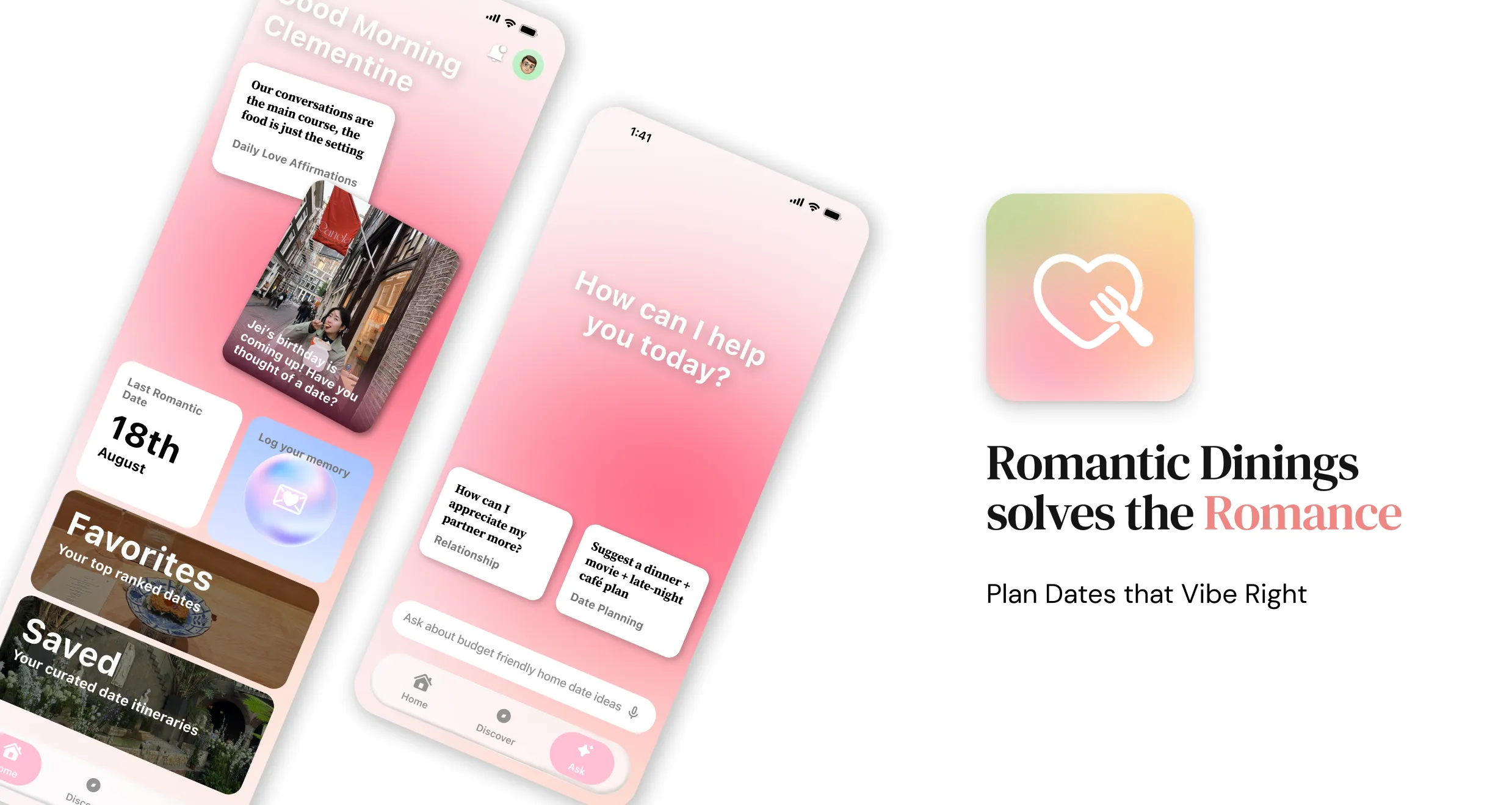
[The Prologue: Why I started Romantic Dinings.]
To me, love is one of life’s greatest teachers and the force that shapes humanity. Every chapter of our history is written because people met, connected, and chose to walk through life together.
Love teaches us patience, empathy, and resilience. I believe that you truly get to learn about yourself by experiencing intentional relationships with others. Yet in a world overflowing with choices, distractions, and comparisons, we have traded patience for convenience. As a consequence, we have forgotten how to savor the slow unfolding of love.
Endless swipes, ghosting, and unrealistic expectations on dating set by social media have made dating feel transactional and a competition, when it should be a shared journey of meaning and discovery.
I started Romantic Dinings to make love more accessible and cherished in this busy modern world.
[The Decline of Dating Apps: Emotional Fatigue.]
The dating app industry is actually dying... Apps like Tinder optimized the swipe and match algorithms, but they left users when the real relationship began.

A Forbes Health survey of 1,000 Americans earlier this year found that 79% of Gen Z respondents reported experiencing dating app burnout, an emotional fatigue closely tied to the rapid-fire swipe interface.
[The cost of dating apps is the “disposability” in relationships.]
This action of rapid swipe interface made us get used to the disposability of connections, a method of interaction that previous generations never experienced.

Current dating apps have devolved into systems of swiping and rejection cycles, delivering dopamine hits at the cost of user satisfaction and long-term emotional health instead of fostering genuine connections.
[Customer Discovery: dating industry stakeholders.]
I cold-called, walked in, emailed, and then interviewed over 60 daters, restaurant owners, and influencers, and found a critical issue in the modern dating system.

By joining CMU’s Project Olympus Customer Discovery Cohort, I took a scrappy, analytical approach, and cold-called and walked in restaurants to speak with the owners, emailed with restaurant marketing teams, DMd thousands of people to learn about their dating experience (got ghosted a lot of times lol).
The goal was to critically answer these questions: who truly benefits from this product? Who pays, and why? What drives user decisions? Why, Why, Why?
Daters (Main App Users)
- Decision fatigue: 35% struggle to choose the “right” date spot.
- Discovery is social: 90% find places via Instagram or TikTok.
- Defaults happen: couples revisit the same spots, reducing novelty.
Restaurants
- Reservation platforms are sticky; switching is rare (POS/data ties).
- Rising costs push differentiation through ambiance, design, experience.
- Limited budgets; finding effective local influencers is hard.
Food Influencers
- Often compensated with meals, yet motivated to create content.
- Local creators are key to early buzz for openings and hidden gems.
- People want to see ambiance, service, and vibe, not just food.
[Solution.]
Romantic Dinings is an AI-driven conversational platform that acts as your personal dating assistant — helping you plan dates, celebrate anniversaries, and receive tailored relationship advice from your own AI coach.
We help users:
- 💬 Personal AI Dating Coach – Chat naturally with an AI that understands your relationship goals and offers personalized advice for building healthy connections.
- 🍽️ Smart Date Planner – Discover and plan romantic dates tailored to your preferences, budget, and location and send love letter invite!
- 🎁 Gift & Anniversary Assistant – Get thoughtful ideas for anniversaries, special occasions, and meaningful surprises.
- 📸 Date Memory Log – Capture and revisit your special moments in a photo booth–style gallery that helps keep your relationship fresh and full of memories.
(V2 - 2025 Sept Newest Update)
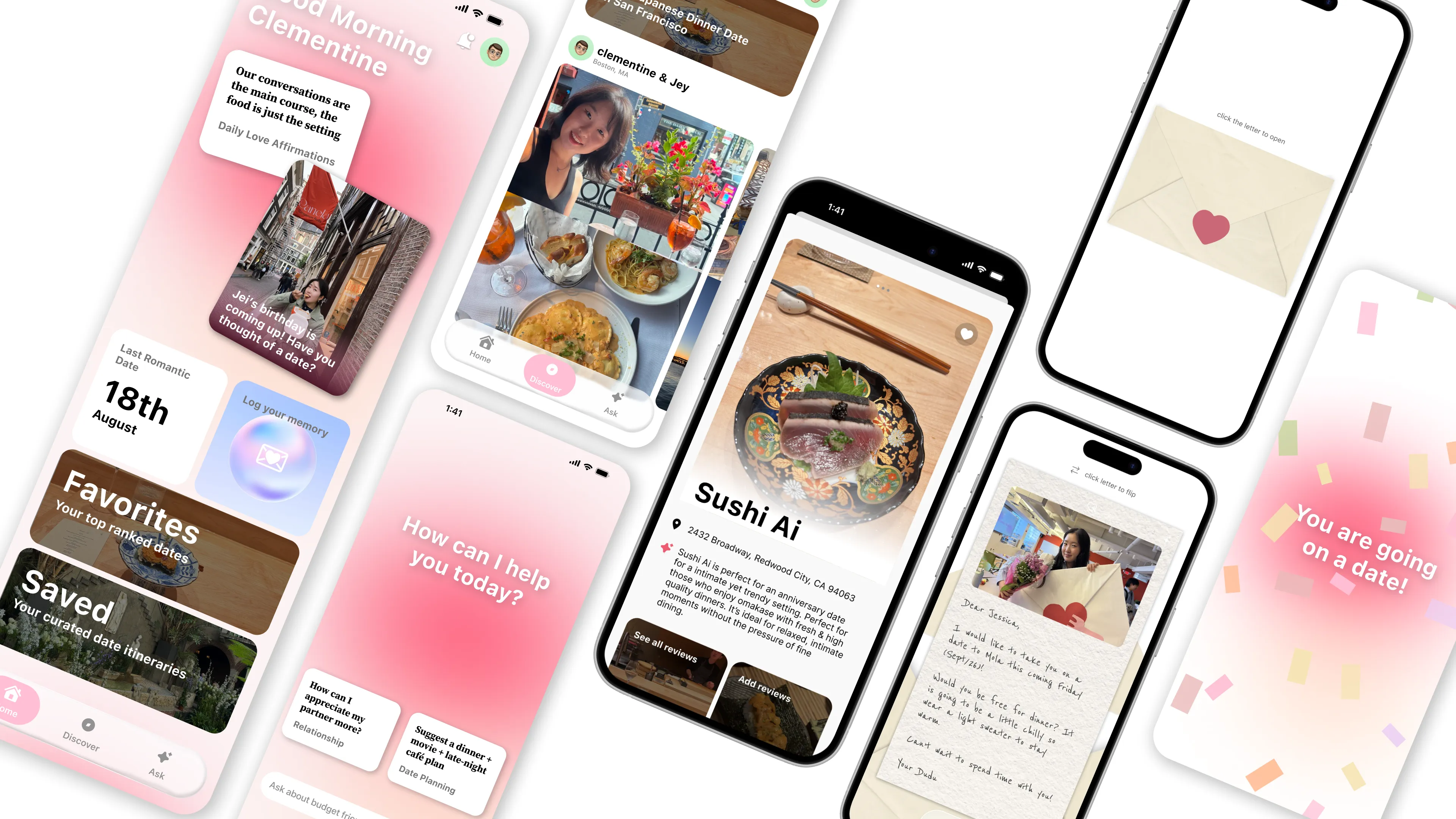
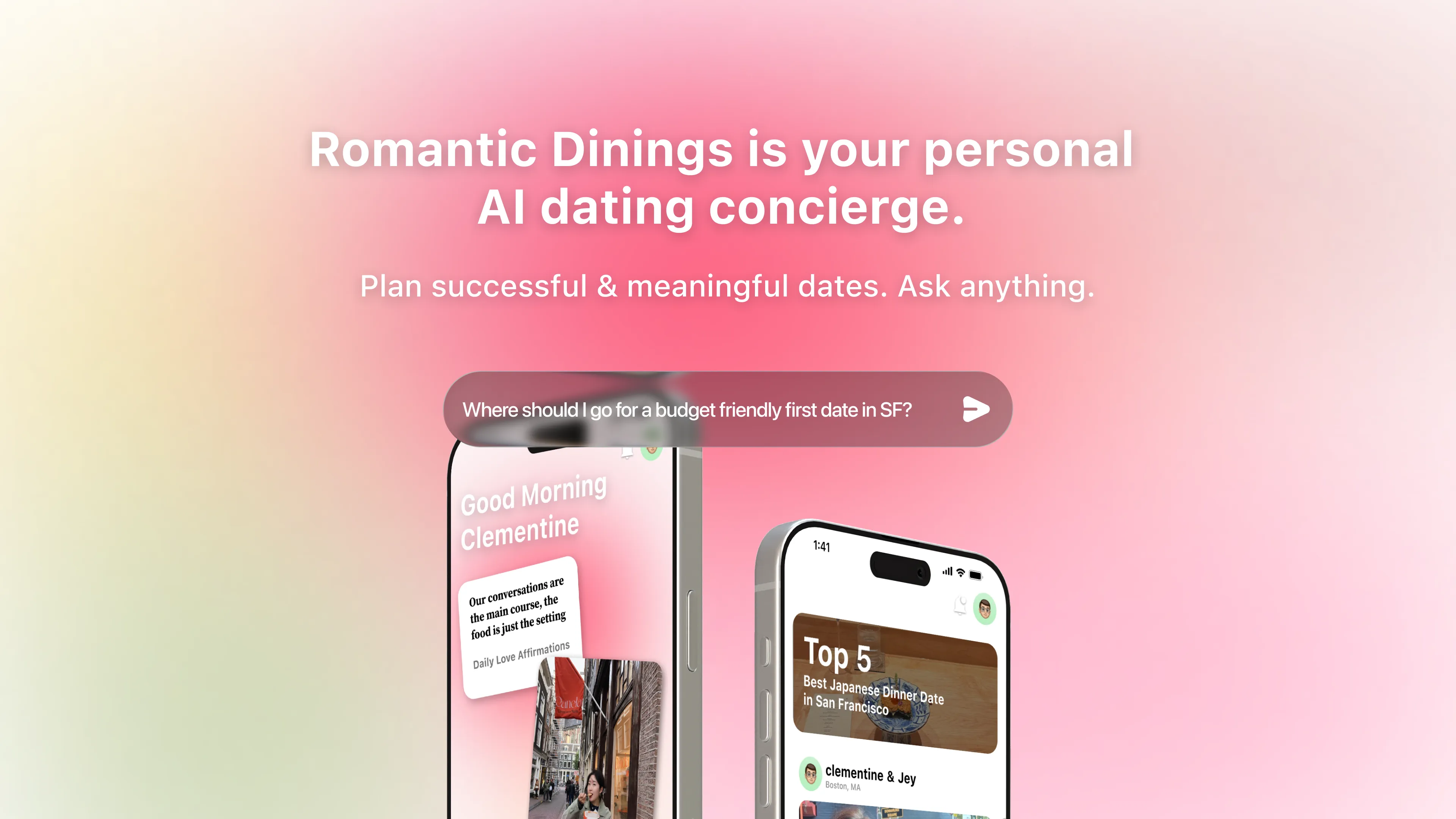
(V1)
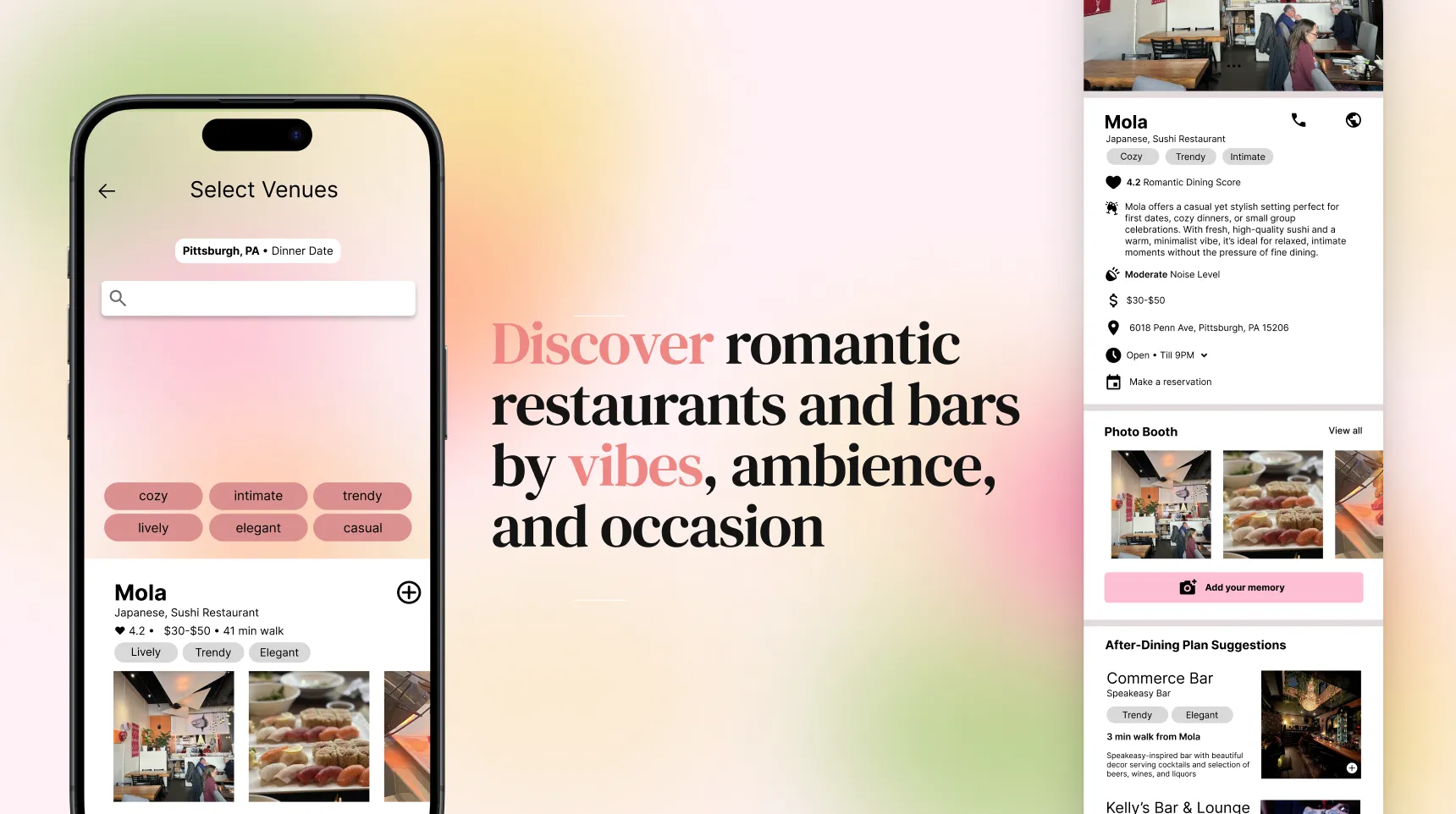
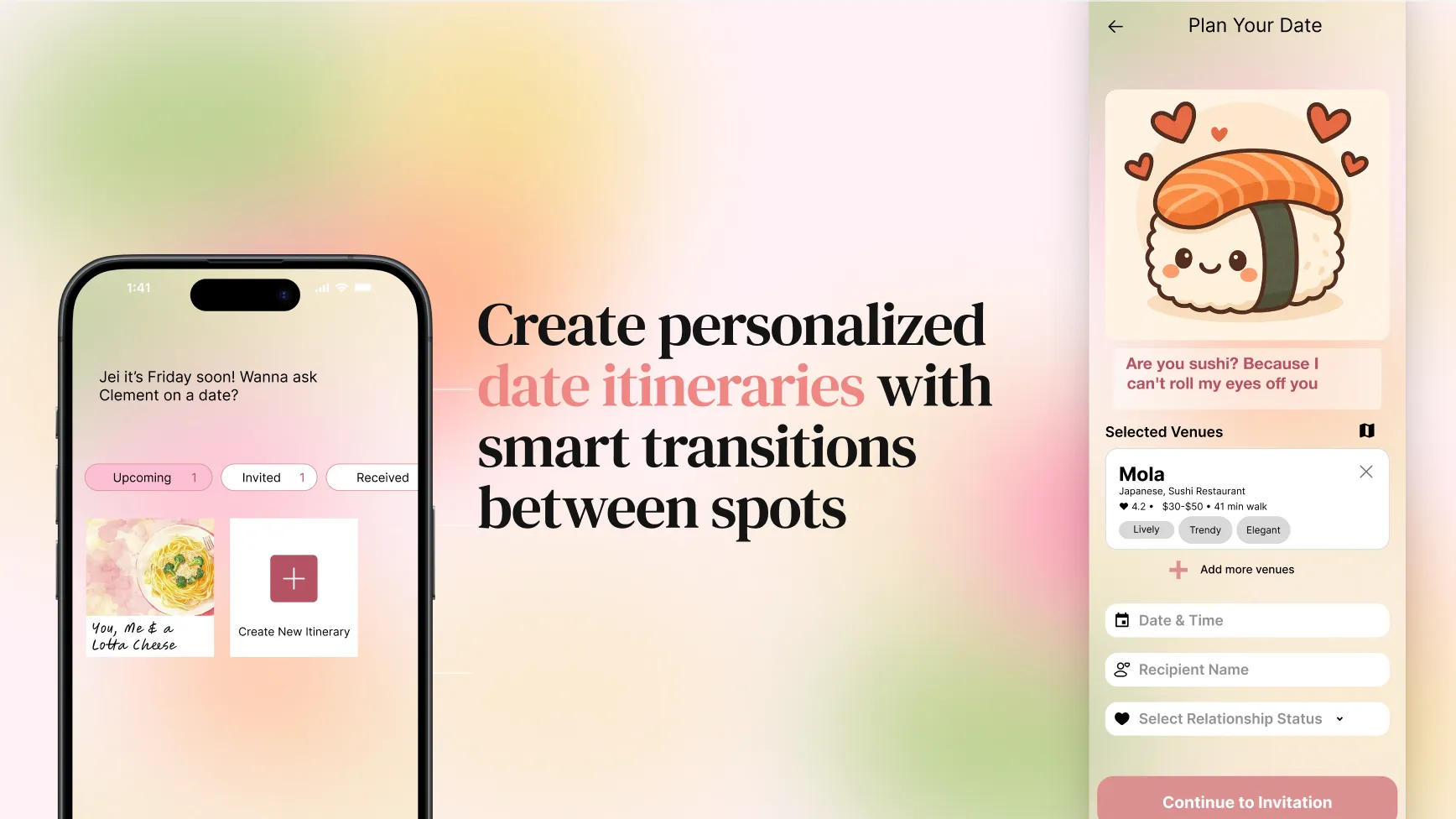
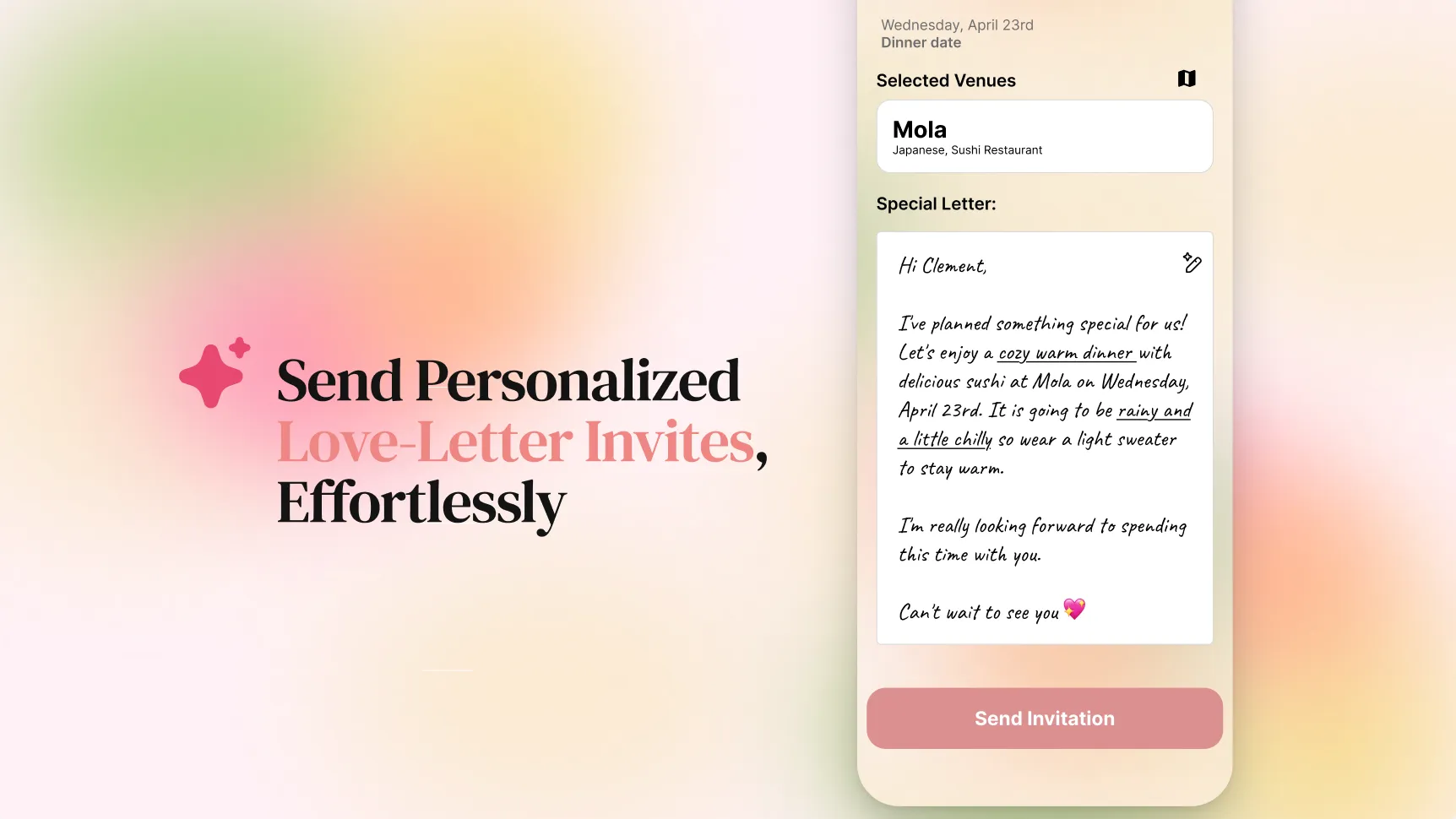
[Why this matters.]
Studies show that couples who plan dates more easily report higher relationship satisfaction and longevity. Romantic Dinings taps into this insight, offering not just convenience, but emotional value.
Couples who regularly have date nights are 14% more likely to see divorce as unlikely, with 83-84% reporting high relationship happiness, compared to 69% among those who rarely spend intentional time together.
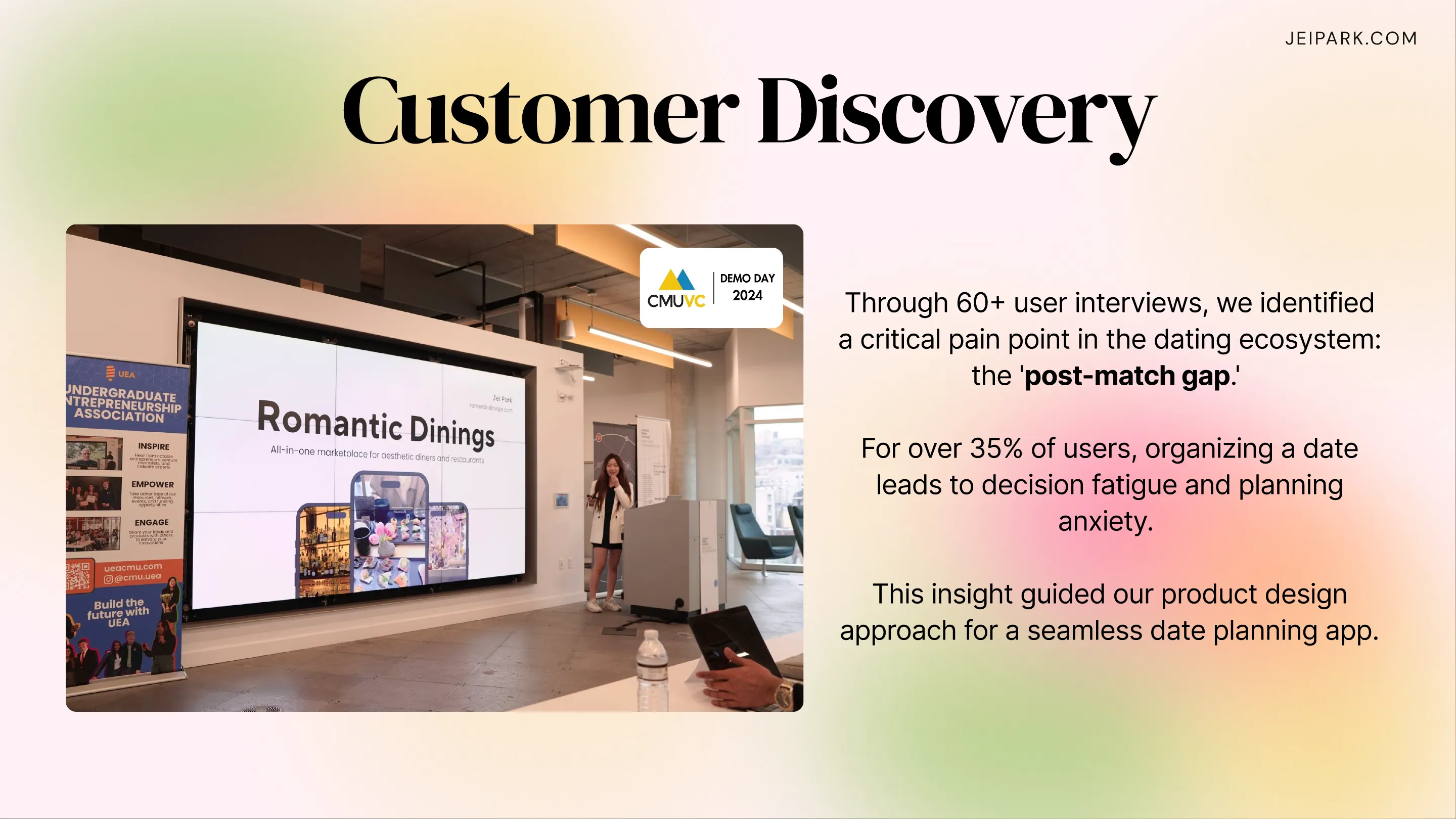
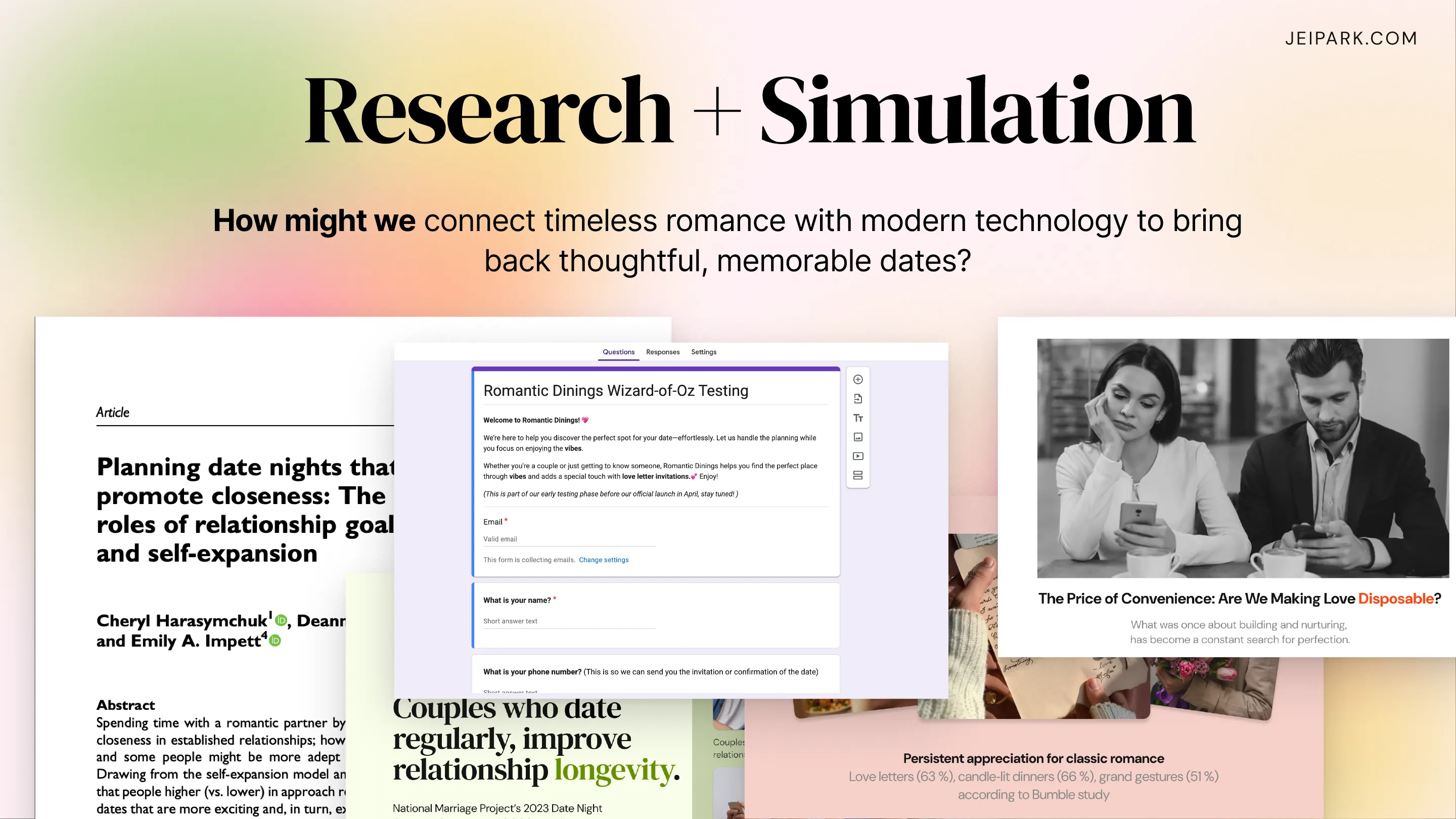
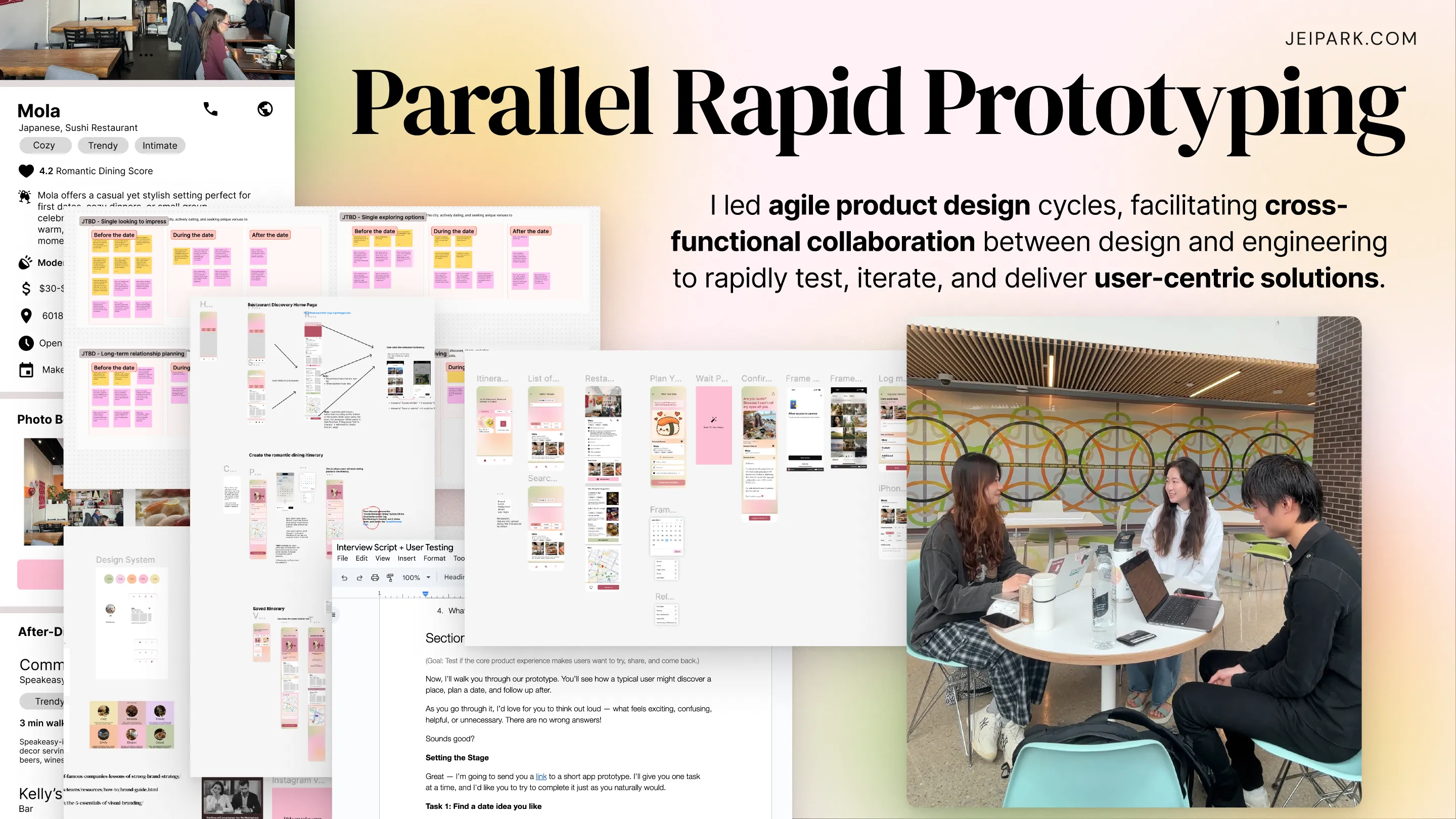
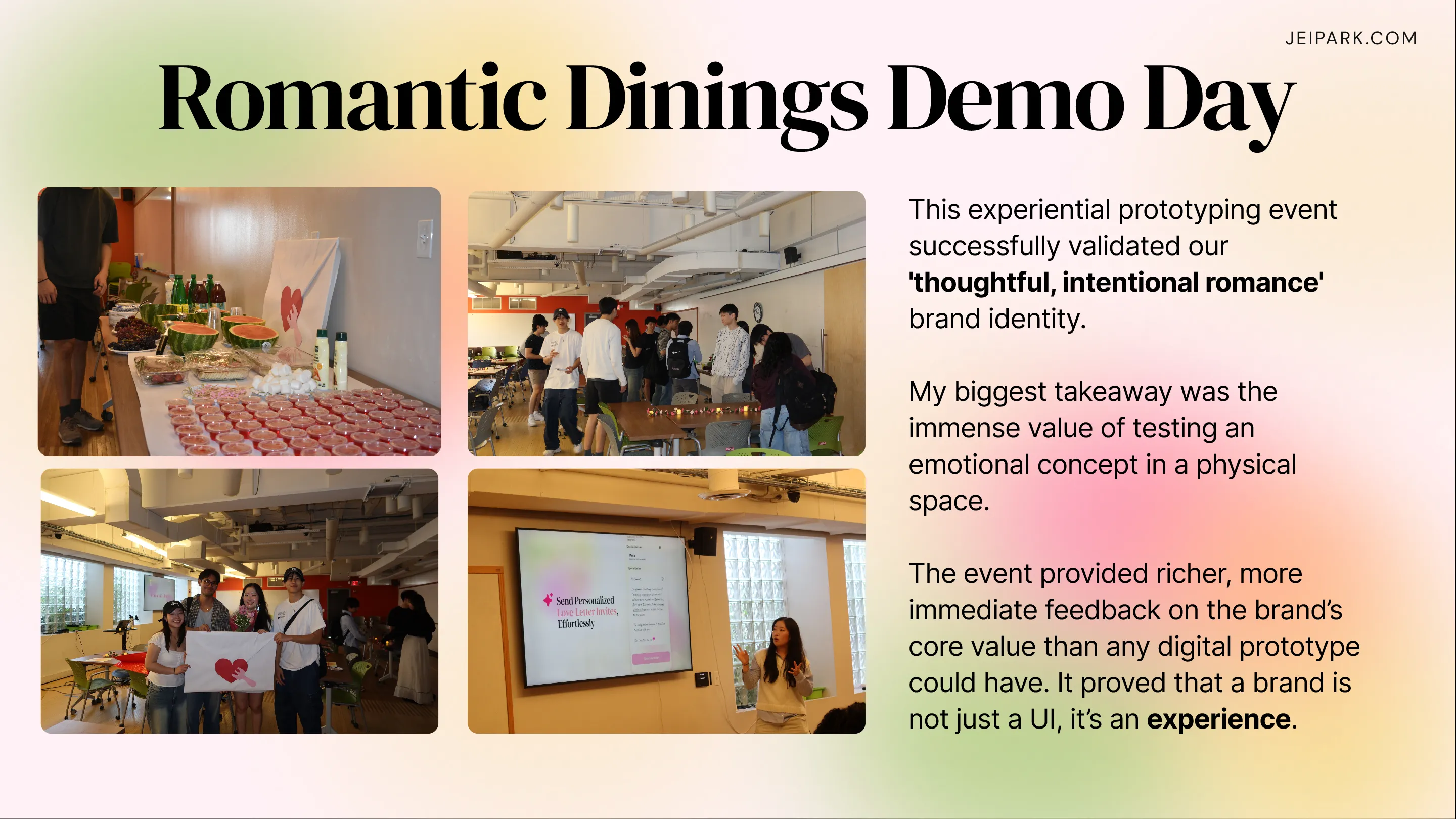
[Launch Party.]
Making it real through an experiential prototype
I produced a live brand experience to test emotional resonance—on a $250 budget. Interactive food, physical props, and a curated ambience turned a classroom into a memorable date-night setting.
The Challenge
How do you create romance on a $250 budget?
My Role
Designer, strategist, and event producer—every detail was personal.
The Approach
I designed an immersive, romantic experience to test the brand's emotional resonance and build an early community.
[How I Made It Happen.]
Every decision was made through the lens of the user experience, balancing brand identity with a shoestring budget.
- Securing Buy-In & Resources: I pitched the concept of an experiential launch to the Carnegie Mellon Human-Computer Interaction department. With the trust and support of Professor Laura Vinchesi, I secured $250 in funding. This required a clear budget proposal and articulation of the event's strategic value.
- Setting the Mood: I created a visual language on Pinterest, then used candles and flowers to turn an academic space into something magical. The challenge was not just to decorate a room, but to fundamentally alter its perceived function and feeling.
- Interactive, On-Brand Catering: A standard catering service was too expensive and impersonal.
The food needed to be an experience in itself.
- Concept: I designed an all-pink, sweet, and interactive menu. This included a "Self-Hwachae Bar" (a Korean fruit punch) where guests could create their own desserts, and hand-dipped chocolate strawberries.
- User Engagement: This approach turned food service into a shared, fun activity, fostering the exact kind of lighthearted connection the app promotes. It was more memorable and on-brand than a passive catering line.
- Bridging Digital & Physical: I built a giant love letter prop and ran a restaurant discovery raffle, making app features tangible and fun.
- Strategic Outreach: I executed a multi-channel outreach campaign targeting key communities within Carnegie Mellon (HCI, Entrepreneurship, AI Ventures) and the broader Pittsburgh tech scene. I sent personalized invitations to founders, VCs, and professors.
- Crafting a Compelling Presentation: I designed presentation slides and prepared script that not only showcased Romantic Dinings, but also clearly communicated its purpose and impact to the audience.
[What I Learned.]
The launch party was a resounding success, exceeding all my initial goals.
- Validated the Brand's Core Value: The overwhelmingly positive feedback on the atmosphere, the interactive food, and the tangible props confirmed that the core brand identity of "thoughtful, intentional romance" resonated deeply with the target audience.
- Built a Powerful Early Community: The event attracted a diverse mix of students, faculty, founders, and industry professionals, creating a strong foundation of advocates and potential early users for Romantic Dinings.
- The Power of Experiential Prototyping: My biggest takeaway was the immense value of testing an emotional concept in a physical space. The event provided richer, more immediate feedback on the brand's "feel" than any digital prototype could have. It proved that a brand is not just a UI, but an experience.
[Reflection.]
Over three months, I iterated on countless prototypes, and single-handedly produced a launch event, all while managing my Master's degree coursework. Through late nights of debugging, designing, and drizzling chocolate syrup, I discovered that passion, when combined with resilience and community, is the ultimate driver of innovation.